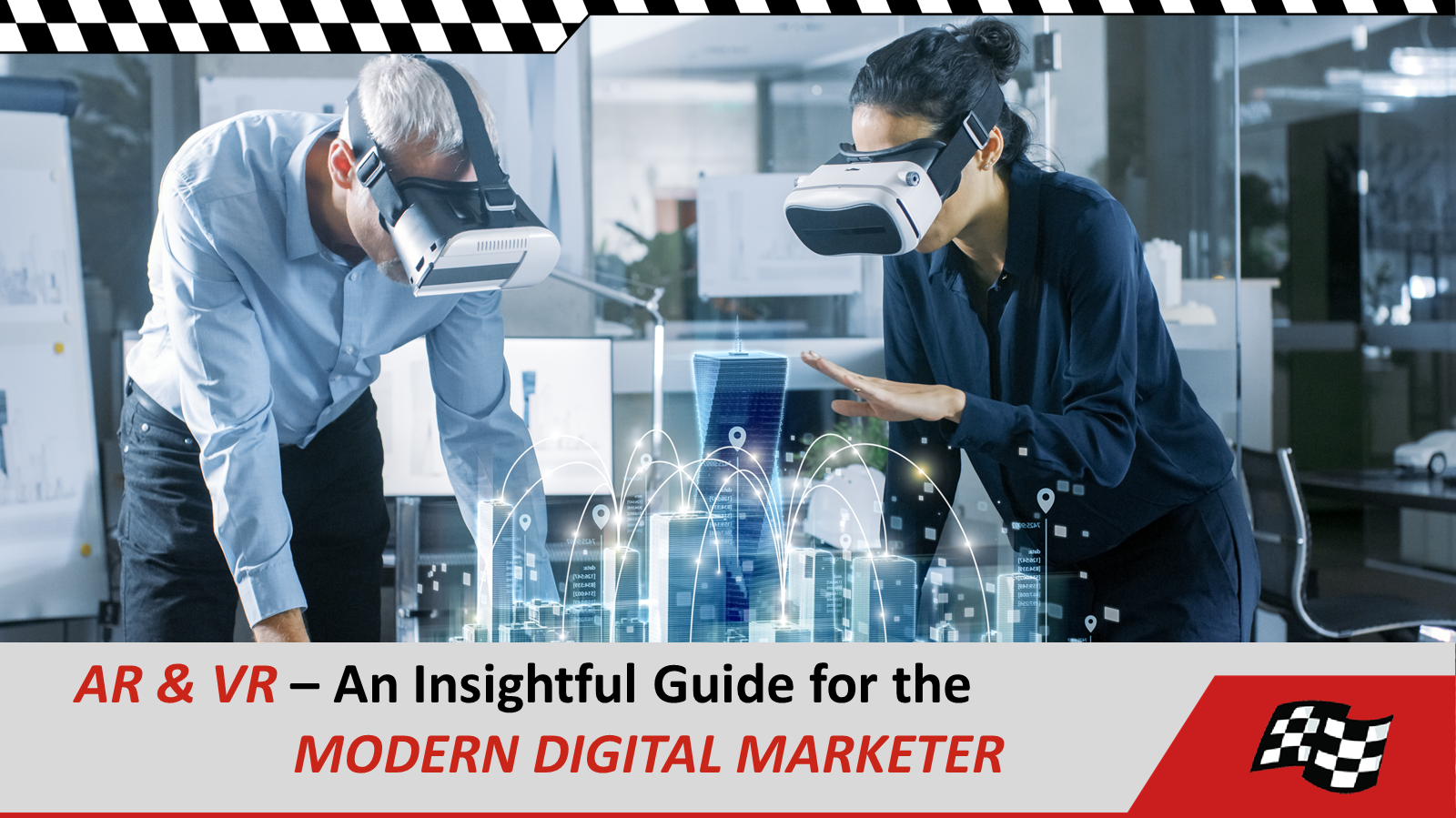
The world has changed for consumers and marketers. Technology has powered this transformation and continues to do so. However, the real disruption is yet to come. If you are remotely aware of the capacities of AR (Augmented Reality) and VR (Virtual Reality), you will know what I mean. Yes, AR and VR is more than just harmless fun where you generate flashy photo-filters on your camera, or sit in a 20 minute 3D simulation ride. For marketers, it’s the next Manhattan of operations; for consumers, it’s their big-ticket to La-La Land.
For the sake of the newbies (if any), let’s lay down the difference first.
AR and VR are not the same
Although both are often spelled out in the same breath (due to a few intertwining technologies), both are different and have different use cases. To put simply,
- VR is the technology that detaches you from reality to bring to you an immersive, superficial, and enhanced experience, which you can experience through sensory stimuli (sight/sounds). You require external VR devices such as Oculus Rift or HTC Vive along with navigation controls to get a sneak peek of La-La Land. Imagine being a part of Jurassic Park, or taking a stroll down the surface of Mars. That’s VR.
- AR keeps you on Earth. It is the technology that adds to your world by superimposing it with digitally created visual layers, thus augmenting your true world. A really good example of it is Pokemon Go.
Mix and match the both and you get something called Mixed Reality (MR). However, let’s refrain from it for now.
Now that you know the basic difference between Augmented and Virtual Reality, let’s find out why exactly they are the next Manhattan of operations for marketers.
Augmented Reality
AR is already providing marketers across various industries with immense opportunities to implement the technology in their marketing strategies. When I say marketing, I intend to lay emphasis on social media. It’s no secret that the early and the most extensive adopters of AR have been major social media giants like Snapchat, Instagram, and Facebook. Needless to say, social media is the best platform for people to consume this technology.
Snapchat paving the way for others to follow
Yes, Pokemon Go sure had its moment, but it’s actually Snapchat that first brought AR and its marvel into the limelight. Snapchat allowed its users to enhance their socializing experience through AR filters. They soon introduced Snapchat Lens, through which users could create their own filters, play selfie games with their friends, and even insert themselves as 3D images into an augmented world. When it came to brands, Snapchat had a provision called Shoppable AR, where brands could promote their own website and urge people to install their applications. Basically, it allowed brands to showcase products that consumers could practically try out using a lens.
The impact and popularity of AR in Snapchat was such that competitors like Instagram and Facebook immediately dived into the pool. Facebook called its platform the AR studio where artists could compile and share their own Facebook interactive camera experiences.
Tip to Social Media marketers: “Gear up to leverage the power of AR”
The very fact that these social media giants are adopting AR at a large scale makes it a no-brainer to think that AR will play a huge role in social media marketing. As the consumer base for this technology grows, brands and marketers will shift focus to social media marketing through AR. Finally, they will have an uninterrupted and innovative means to promote themselves. No wonder the Global Augmented Reality Ad revenue is expected to skyrocket in the years to come.
The influence of Augmented Reality on Social Media
Customer engagement is one of the key areas that brands focus on. They know that it is perhaps the most important way to lure customers in to purchase their products or services. Well, that’s one of the primary things that AR achieves. It engages customers. The crux for brands and marketers lies in the way they curate their branding/advertising content and feed them to customers on social media. Let’s see a few avenues that validate AR to be the future of Social Media and Social Media Advertising.
Virtual brick-and-mortar: Brick-and-Mortar is not dead. The ability to provide an enhanced in-store experience has kept it breathing. But what if customers don’t need to visit stores anymore? That’s what AR is doing. Shopping on social media is nothing new. But it just got a lot more immersive and engaging. AR ensures that people don’t need to visit stores anymore. They can just check in to AR’s virtual store, try out products that they like and end up purchasing it, just like that.
New Age Product Marketing: Remember what videos did to photos? It’s time to get accustomed to the ten times more engaging AR videos. With AR, the scope for creativity is huge as marketers can curate videos in different ways. They can portray product descriptions, demonstrations, real-life scenarios, user experience, etc. through these videos.
UGC & 3rd party endorsements: People share if they care. That’s one of the truest sides of the social media story. If brands can immerse their customers into an amazing AR experience, they are bound to share the experience online on social. This will lead to involuntary endorsements and user generated reviews, which if not anything more, is a blessing for brands.
Virtual Reality
When it comes to Virtual Reality, the scope for advertising and promotion for brands is just as extensive as AR, if not more. As mentioned earlier, in most cases, the perks of the VR technology need to be enjoyed through VR headsets or gears like Oculus (Facebook), HoloLens (Microsoft), or Google Glass. Remember how the digital landscape shifted to mobile from desktop? The next wave will be the VR wave by the looks of things.
Findings estimate that the installed base of virtual reality headsets is forecast to grow to 37 million by 2020.
Again, Social Media’s indulgence does paint a picture
This time, it’s Facebook that has taken the onus upon itself to create VR-powered opportunities for brands and customers alike. Did you know that Facebook spent over US$2 billion to acquire Oculus? Still, the common notion going around when one talks of VR content is video games. Facebook came up with Facebook360 to widen the horizon.
Facebook360 was the company’s first attempt to blend the real and virtual spheres. It’s a dedicated app powered by VR, aimed to serve as a hub for all 360 photos and videos posted to the site. Provisions are also there for users to share and post reactions to content. That’s it. Put down your phone to the right and your laptop to the left. Goggle up and cruise through your Facebook feed.
VR – A must include aspect for every marketing strategy across industries
Virtual Reality is the modern marketer’s new best friend, as it presents ample opportunities to create a lasting impact on their customers. All tech giants like Apple, Google, and Microsoft are investing heavily on VR. Augmented & Virtual Reality is set to become mainstream in the years to come. The market size for Augmented and Virtual Reality is estimated to be worth a whopping US$192.7 billion by 2022.
Let’s have a look at how VR is a boon to marketers across various sectors:
- Real Estate & Home Improvement: Buying a house can be a real hassle. We all know that. The amount of location to location, to-and-fro visits one has to make, just to discard one option after the other is a real pain. Well, it’s all about to change, real soon. Now you can sit on your couch and view as many homes as you want before selecting one that you want to buy. All you have to do, again, is Goggle up. One of the Virtual Tour Platforms that is worth a mention here is Matterport. Matterport creates an enriched house-buying experience by producing both 3D and VR videos which can be experienced by goggling up devices such as Oculus Go, Gear VR, etc.
Closely associated to real estate is the home improvement sector, and there is ample marketing opportunity here as well. Big brands like IKEA and John Lewis are already investing in VR to ensure a customer experience like never before. Now you can easily put your imagination to reality by understanding exactly what your dream bathroom should look like, or if the 1500$ sectional is apt for your apartment. - Travel, Tourism, and the Hospitality Sector: A vacation is all about picking the correct place and having a ball of a time. Most of the time, we visit places based on third-party reviews or by viewing TV/Internet videos that can at times be highly misleading. It’s time to put on your goggles and put all these worries to rest. VR enables you to take that trip to Switzerland even before reaching there. Also, you can view exactly the kind of hotel rooms you would want to stay in. It’s a massive avenue for tourism companies and the hospitality sector to invest in. Proper curated content on VR can truly transform their business opportunities.One Aldwych – a 5-star hotel in London – hands their guests VR handsets when they order drinks. Say for instance, they order a cocktail. The headset reveals exactly where their chosen tipple is made. Another worthy mention can be made of Atlantis (Dubai), which allows its guests to explore all the rooms, amenities, and go swimming with the dolphins. All VR aspirants should follow suit.
- Retail: Another massive marketing opportunity lies in the retail sector. Online and offline alike, retailers can now focus on providing the most retail-esque shopping experience ever. Confused about how the dress would look on you? See the model try it out first and then decide. Big names in the game like Walmart and Barneys are already embracing the power of VR by investing heavily in it. This validates the opportunity that lies in the technology.
AR & VR – The mainstays of the Future
Augmented and Virtual Reality certainly adds a whole new dimension to customer experience. The fact that AR & VR are the mainstays of the future is not up for a debate. The following findings provide a fair and clear indication.

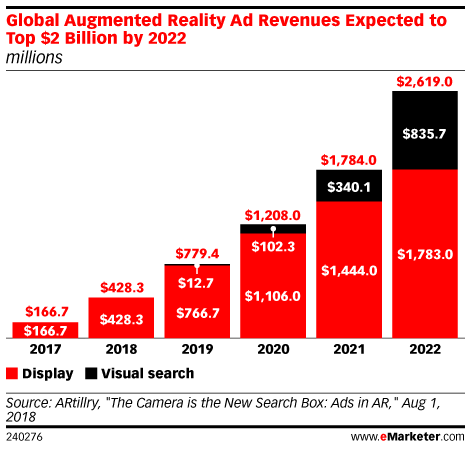
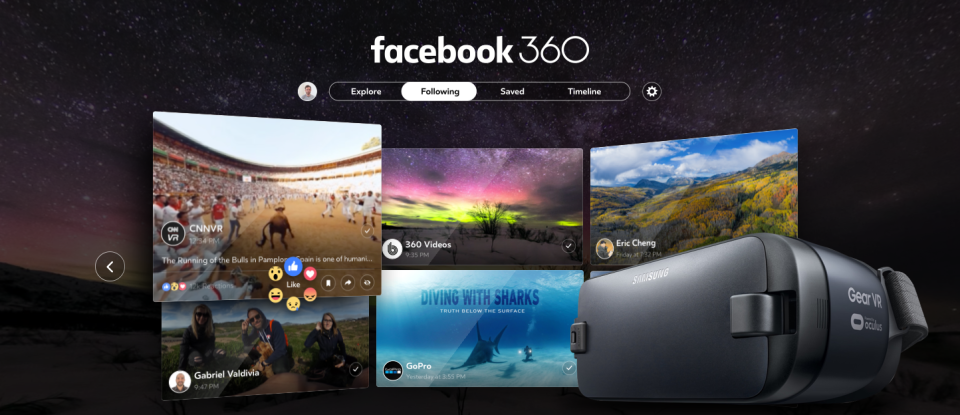
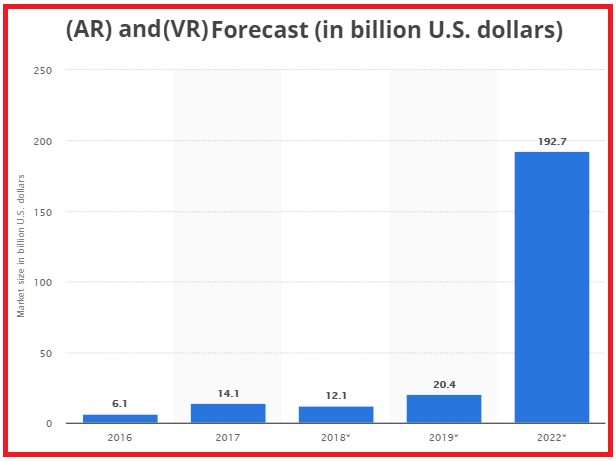
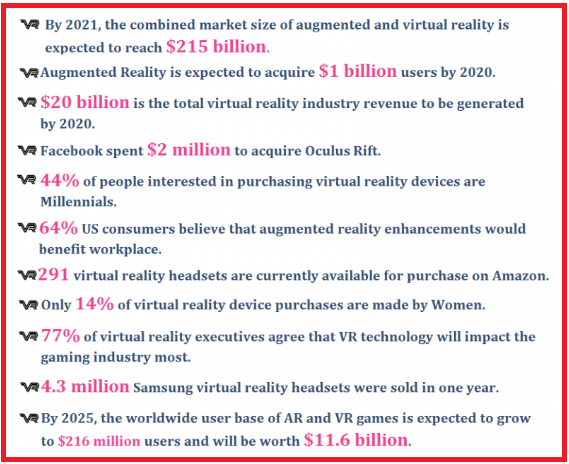
4 Responses to AR & VR – An Insightful Guide for the Modern Digital Marketer